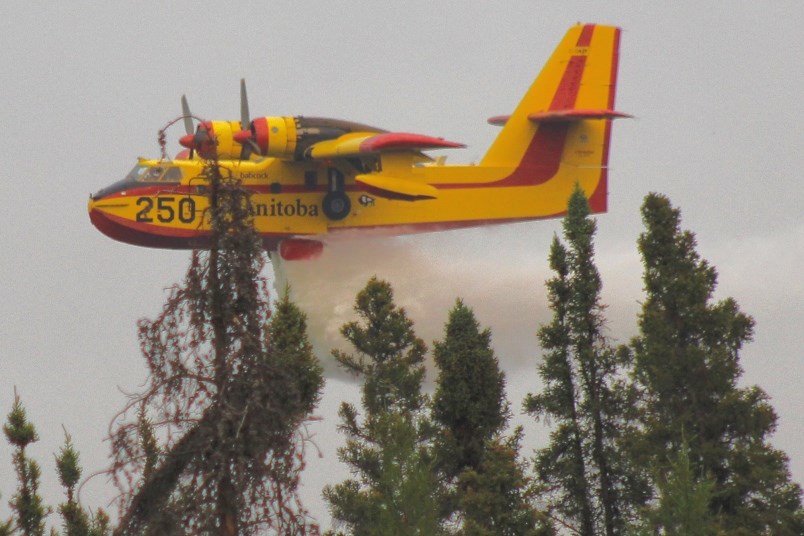New hotspots are still popping up for the ALIR fire near Amisk Lake, but according to provincial data, the fire isn’t burning closer to Highway 106 at the moment.
Hotspots with the fire are burning near the Sturgeon Weir River, instead of further north to the road, following along the river to the northwest. The hotspots show the ALIR fire is once again burning toward area affected by the Granite fire in 2017 - the Granite fire burned both north and south of Highway 106 and area impacted by that fire is immediately north and west of the latest ALIR hotspots.
As of Sept. 13, the ALIR fire has burned over 30,600 hectares of forest, mostly along the west shore of Amisk Lake. The fire has burned since July 11, when it was started by a lightning strike.
The fire is now being considered “ongoing assessment” by the Saskatchewan Public Safety Agency (SPSA) as of Sept. 13, but Natural Resources Canada still has the fire listed as “out of control”. A new obstacle has surfaced - the pending layoffs of much of the SPSA’s main firefighting staff, who are seasonally employed. The Reminder has learned that much of the SPSA’s workforce, including Type 2 and Type 3 firefighters (First Nations and northern community crews and emergency fire personnel) were laid off earlier this month. Some of the service’s Type 1 firefighters, among the SPSA’s most experienced and highly trained staff, were laid off last week.
An SPSA spokesperson said that some of the SPSA’s crews would be extended further into the fall and some equipment could be made available to fight remaining fires.
“In order to address fires that remain at this time of year, the SPSA already has extended some of its crews into the fall. The SPSA is still able to hire equipment as needed and we retain some of our air tanker fleet on alert through mid-September,” reads the spokesperson’s statement, which was received Sept. 9.
Only three fires are still considered to be “active” in Saskatchewan, according to the SPSA - the ALIR fire, the Bell fire near Hudson Bay and the Helene fire south of Meadow Lake. The SPSA has each listed as “ongoing assessment”, while Natural Resources Canada considers all three to be “out of control” as of Sept. 13.
The Hobb fire, which burned south of Hanson Lake and Foran Mining’s McIlvenna Bay property, is now considered to be “out”, as is the Fitz fire which burned near Cotteral Lake. The two fires affected about 3,800 and 150 hectares of forest, respectively.
Manitoba
Things are calming down in Manitoba, where several fires are reporting no recent hotspots and several large blazes are now coming under control. The WE038 fire, which burned north of Kisseynew Lake, is now listed as “under control” by Natural Resources Canada and Manitoba Conservation and Climate.
A complex of three fires north of Snow Lake, east of Sherridon and south and southeast of Pukatawagan is still considered mostly active, but activity is slowing down. The three fires - WE032, WE049 and WE064 - are now in different states.
The largest of the three, the WE032 fire, is still considered “out of control” and has impacted over 64,000 hectares of area. However, no recent hotspots have been reported with the fire and coming weather conditions - as well as an expected fall chill - may keep what’s left of the fire at bay.
The WE064 fire, burning closer to Pukatawagan, has shifted in status from “out of control” to “being held”, considered as such by both Natural Resources Canada and Manitoba Conservation and Climate. Like its neighbours, no recent hotspots have been found with the fire. The WE049 fire is the smallest of the three and is burning mostly away from populated areas, having affected 22,500 hectares of land. Manitoba Conservation and Climate considers that fire to be “monitored”, while Natural Resources Canada still considers that fire to be “out of control.”




